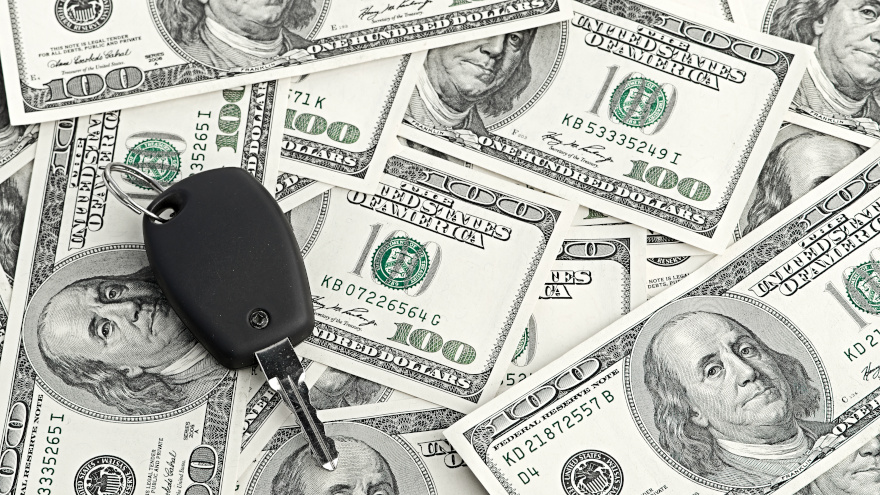KBRA, S&P tap September & October ABS data to uncover trends about originations, extensions, collections and delinquencies

By subscribing, you agree to receive communications from Auto Remarketing and our partners in accordance with our Privacy Policy. We may share your information with select partners and sponsors who may contact you about their products and services. You may unsubscribe at any time.
Last week, both Kroll Bond Rating Agency (KBRA) and S&P Global Ratings shared intriguing findings based on analysis of September and October data generated by the automotive securitization market, noting trends about originations, extensions, collections and delinquencies.
SubPrime Auto Finance News obtained additional information from S&P Global Ratings, which said in a news release, “U.S. ABS prime auto loan performance strengthened in September 2022, recording stable losses, higher recoveries, and lower delinquencies and extensions month-over-month. Meanwhile, subprime metrics also improved with lower losses, delinquencies, and extensions month-over-month. We credit some of the improvement to September having five Fridays in the month and ending on a Friday, which is typically a payday.
“The 2018 through 2020 vintages continue to perform sequentially better than their immediately preceding vintage,” analysts continued. “However, beginning with the second-quarter 2021 vintage, losses have started to rise relative to the full-year 2020 and first-quarter 2021 cohorts. In addition, the recent quarterly vintages are reporting higher 60+ day delinquencies than the 2014-2019 pools.
“Through the first nine months of 2022, weighted average FICO scores have increased slightly relative to 2021, but terms continue to lengthen,” S&P Global Ratings went on to say.
That previously mentioned additional information included four notes specific to subprime paper included in securitizations so far this year, including:
—The weighted average FICO score improved marginally to 594 from 590 for all of 2021.
Subscribe to Auto Remarketing to stay informed and stay ahead.
By subscribing, you agree to receive communications from Auto Remarketing and our partners in accordance with our Privacy Policy. We may share your information with select partners and sponsors who may contact you about their products and services. You may unsubscribe at any time.
—The weighted average APR declined to 16.27% from 17.07% last year.
—Contracts with original maturities greater than 60 months increased to 86.73% from 86.30% in 2021.
—Contracts with original terms of 73-75 months increased to 12.62% for the first three quarters of 2022 from 8.56% for 2021 and contracts with an original term of 76-84 months increased to 2.44% from 1.46%.
“While this could perhaps indicate better credit quality loans, it could be reflective of the highly competitive conditions in the market and lenders reluctance to raise pricing, which could result in weaker credit quality applications. As ABS funding costs have skyrocketed this year, we would expect subprime lenders to offset this by either raising APRs and/or increasing the discount/fees on the loans they buy,” S&P Global Ratings in the full report available through this website.
Analysts also shared with SubPrime Auto Finance News that prime and subprime issuers both saw a decline in extensions rates month-over-month during September, which they said was likely due to the month ending on a Friday.
“However, they continue to escalate year-over-year and relative to pre-COVID-19 pandemic levels in September 2019,” S&P Global Ratings said.
Analysts indicated prime extensions decreased to 0.44% in September from 0.48% in August and increased from 0.41% in September 2021, and 0.38% in September 2019.
Similarly, extensions for subprime public and 144a transactions declined in aggregate to 3.55% in September from 3.76% in August and rose from 3.00% in September 2021, and 2.81% in September 2019.
“Over the coming months, we will be monitoring the impact that Hurricane Ian, whose landfall was near Fort Myers on Sept. 28, has on deferments and other performance metrics,” S&P Global Ratings said.
“Florida often represents 10.00% or more of auto loan ABS, so we may see elevated deferments. Affected consumers will be able to offset some collateral damage or total loss with insurance proceeds, but how much remains to be seen,” analysts added.
So how are consumers paying on those contracts? KBRA addressed those matters through its latest update.
KBRA analysts said October remittance reports showed a second straight month of mixed credit performance across securitized prime and non-prime auto pools.
Annualized net loses edged higher, but delinquency rates improved in KBRA’s prime and non-prime auto indices on a month-over-month basis.
Annualized net losses in KBRA’s prime index moved 3 basis points higher month-over-month and 20 basis points year-over-year to 0.34%, while prime delinquency rates for contracts 60 days or more past due improved 1 basis point month-over-month but rose 10 basis points year-over-year 0.38%.
Meanwhile, annualized net losses in KBRA’s non-prime index increased 45 basis points month-over-month and 300 basis points year-over-year to 7.16%, while the percentage of non-prime contract holders 60 days or past due came in at 5.22%, which was 5 basis points lower month-over-month but 128 basis points higher year-over-year.
“Recovery rates have continued to decrease largely due to the decline in used vehicle values throughout 2022, which has placed some upward pressure on loss rates,” KBRA said. “Recoveries fell 10.7 percentage points and 8.4 percentage points year-over-year to 53.4% and 46.8% in our prime and non-prime indices, respectively.
“However, recoveries remain within historical levels, trending closely with 2017-2019 vintage levels in our prime index, while our non-prime index is expected to reach those levels before year-end,” KBRA added.


